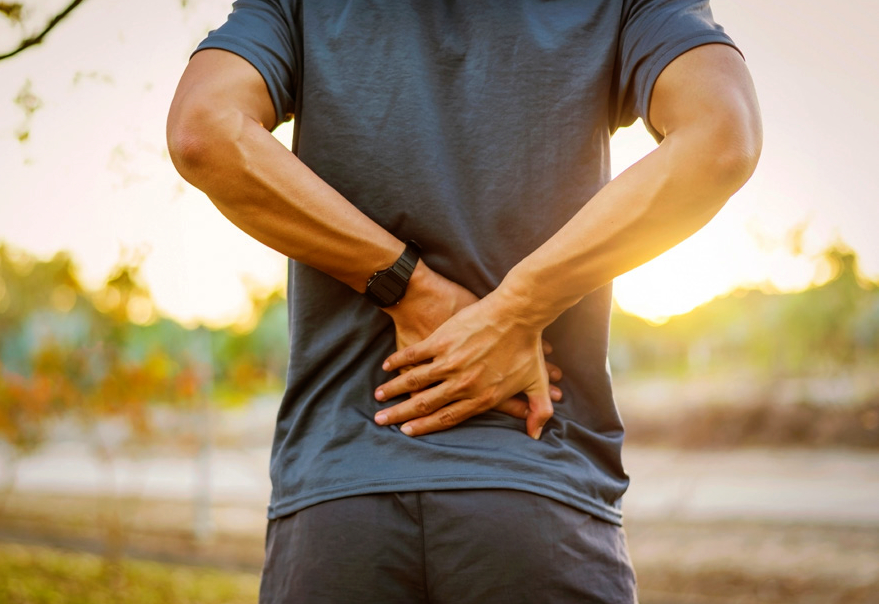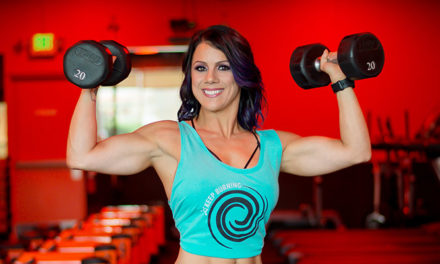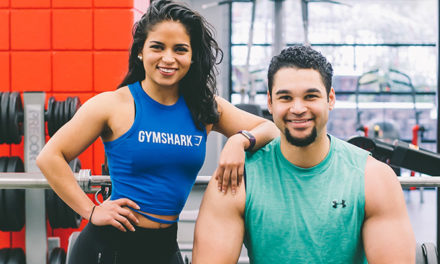WHAT TO DO IF BACK PAIN IS INTERFERING WITH YOUR WORKOUT?
Back pain, also called dorsalgia or lumbago, afflicts 80%–85% of the US population at some point in their life. Back pain can be acute (less than 30 days), subacute (30–90 days), or chronic (greater than 90 days). How long the pain has been present may determine what one should do.
If the pain is less than 30 days and is not severe or progressively worsening, then home remedies are reasonable. This may include a multi-faceted approach to include non-steroidal anti-inflammatories (NSAIDs), acetaminophen (Tylenol™), icing 15 mins on and off for pain and spasms, topical analgesics for local pain control (e.g., Biofreeze ™, IcyHot ™, or Aspercreme ™ gel, creams, or patches). You should be cautious of Tylenol ™ if you have known liver disease and NSAIDs if you have renal disease or a history of increased risk of bleeding. Consult your primary care physician before using these if you are unsure, and of course, avoid these medications if you have allergies to any of them.
In addition, home exercises to stretch the back muscles and strengthen the core are also helpful, and websites such as the American Academy of Orthopedic Surgeons (AAOS) or the American College of Sports Medicine (ACSM) back rehabilitation programs are excellent. These exercises should be continued 2–4 weeks past the point of return to normal activity and considered for lifelong incorporation into your health fitness routine.
Reducing the work frequency and routine, including weightage, by 50% or a non-painful level is recommended. The intensity can be gradually increased during each activity session over two weeks back to 80%–100% if tolerable. Avoiding activity that is extremely painful or whereby pain can make exercising unsafe should be avoided during this transition period.
If you fail to improve after 30 days of home conservative therapy, then consultation with your primary care physician is reasonable as you may need a referral to an Orthopedic Surgeon, Sports Medicine physician, Physiatrist, or Spine Interventionalist. It will help your physician if you document all the home remedies you have tried, what has helped and what did not help, how much each remedy helped, and how often and for how long you used or performed each remedy.
WHAT TO DO IF YOU WAKE UP WITH A STIFF BACK?
Back stiffness can have many meanings to regular people as opposed to what a physician considers back stiffness. In general, back stiffness refers to limited mobility and/or range of motion of the waist, and may or may not improve as the day goes on. This can be due to many causes such as arthritic conditions that affect the spine, a back sprain or strain, muscle spasms, or autoimmune conditions. You may try to incorporate daily stretching activities using online resources from AAOS or ACSM. Doing these exercises at least four times per week and at least twice daily may be helpful. If your back stiffness is associated with pain that is progressively worsening, severe, or lasting longer than 30 days, consider consulting with your primary care physician. You may need a referral with an Orthopedic Surgeon, Sports Medicine physician, Physiatrist, or Spine Interventionalist.
Other considerations are to evaluate the condition of your pillows, mattress, and sleeping position. You may want to avoid sleeping on surfaces that are too soft such as a couch or very soft mattress, and attempt side sleeping if able. Heating pads may also be useful to allow muscles to be warmed up to lengthen better, which may assist mobility. Lastly, avoiding bed rest is beneficial to prevent further decline in function and stiffness. You should continue to perform as much normal activity as you can in a safe manner, minimizing activities that require quick reactions and movements.
HOW DO I KNOW WHEN TO REST OR GET HELP WITH AN INJURY?
Neither being hurt nor being injured requires total rest but may require activity modification. If you are injured, then you want to limit activity involving that body part as it may worsen the condition—in this scenario we are talking about back pain. If you are unable to perform a critical task related to back pain, such as relating to your occupation or daily activities, and home remedies have failed to help you recover, then you should seek the consultation of a medical expert, such as your primary care physician, or Physiatrist, Spine Interventionalist, Sports Medicine physician, or an Orthopedic Surgeon.
Injuries that limit recreational activities without significant impairment (i.e., a physical injury that causes loss of the ability to walk, stand or sit; loss of the ability to use a limb; or daily severe pain) can be managed conservatively with home remedy pain control and activity modification, which is avoiding activities that trigger the impairment or pain. Injuries that affect occupational status or daily activities may require attention sooner than later if not improved within one week or are of such severity that you are suffering without immediate relief.
Many times, these types of injuries require a high-fidelity physician evaluation with medical imaging to aid in diagnosing and treating the problem. It is also important to have realistic expectations once your problem is identified, as many musculoskeletal conditions make take many weeks to months to improve. Commitment to a pain control regimen and a therapeutic physio regimen is needed, and this will likely need to be incorporated life-long to limit recurrence or worsening of the condition once improved.
As always, if you are unsure what to do, consult with your primary care physician. For more information visit Orthosouth.org or call 901.641.3000
Dr. Abrams is a fellowship trained interventional spine specialist with OrthoSouth who sees patients at the group’s Briarcrest Ave. and Southaven clinics. He completed his fellowship in Pain Medicine at Hershey S. Milton Medical Center at Penn State Health and his surgical residency at Boonshoft School of Medicine at Wright State University-Wright-Patterson Air Force Base. He is a graduate of UT Health Science Center in Memphis. In his free time, Dr. Abrams enjoys riding his motorcycle, playing basketball, and competitive shooting.







